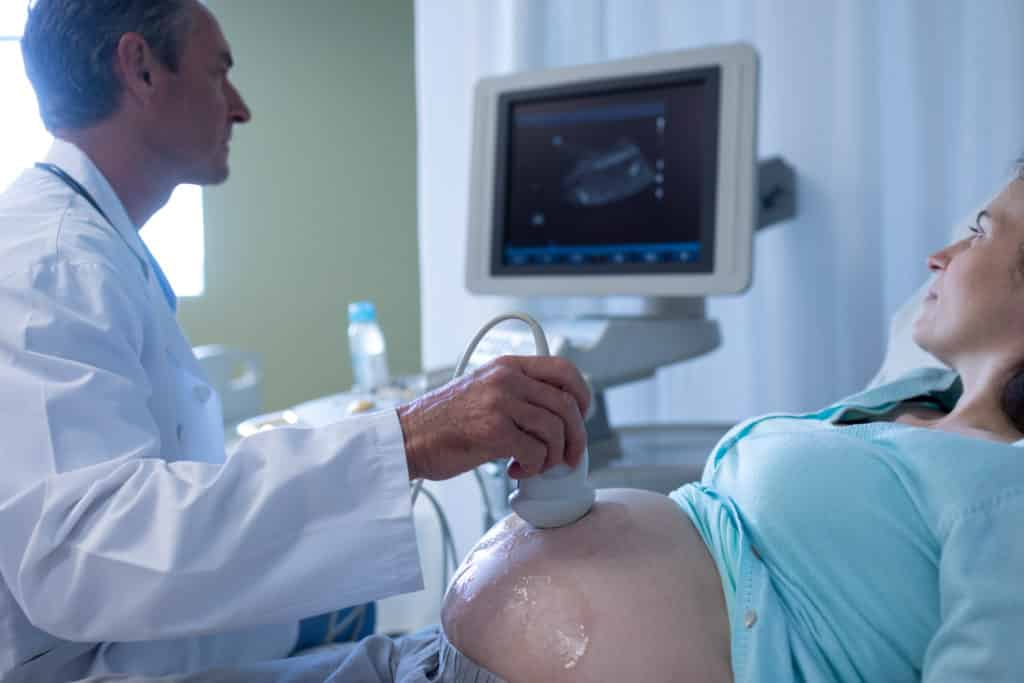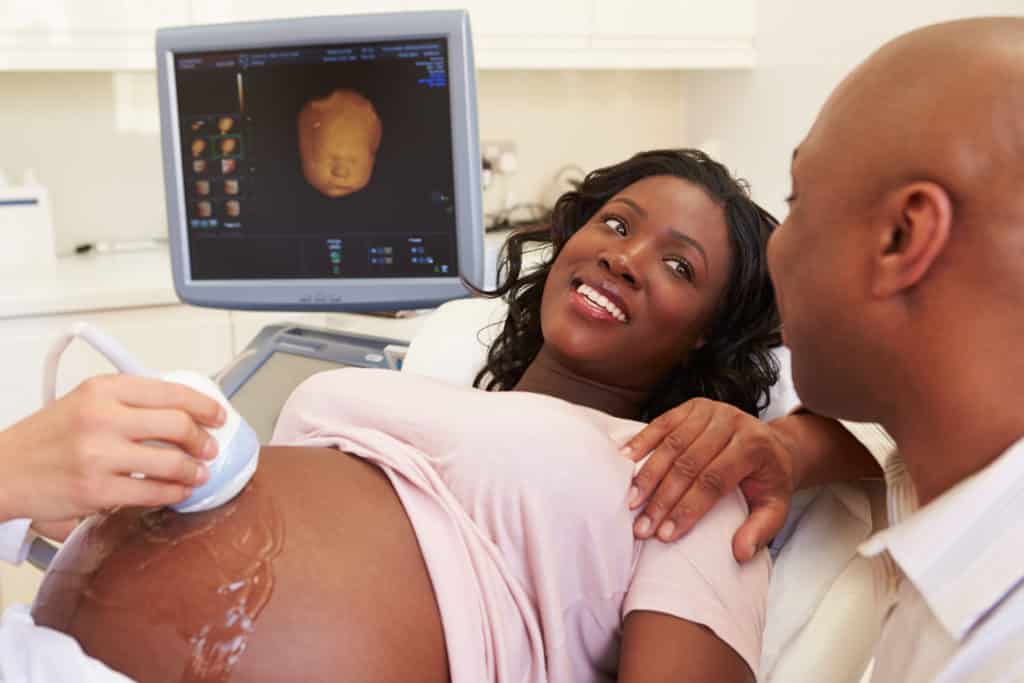An exciting experience for many expectant mothers is the moment when they feel their baby’s first kick or a change in his/her position.
You may not feel your baby move for the first time until you are about 14-20weeks gone. Many more kicks will surely come after that as your little bean explores his/her temporary home.

Feeling your baby bounce or turn around in your womb is a good sign.
Of course, a bouncing baby is a healthy baby, especially in the third trimester. This is because the third trimester is the time when your baby flips over to assume the birthing position.
This is very important as the position your baby takes in the womb makes all the difference in how you give birth. The final position most babies (about 96%) assume just before birth is the head-first (cephalic) position.
In This Article:
What Is Cephalic Position?
You’d most likely begin to hear the term “cephalic position” or “cephalic presentation” as you get closer to your delivery date.

Let us break it down for you; this simply means that your baby’s feet are up with his head down near your birth canal, or vagina. This head-first position is the safest way for your baby to come into this world.
Your doctor will closely keep track of your baby’s position as you get closer to your delivery date. This should begin around weeks 34-36 of your pregnancy. If your baby is not in the cephalic position by the 36th week, your doctor might try to gently nudge your baby into position.
There are two ways your baby may assume the head-first position:
i) Cephalic Occiput Anterior
In this position, your baby’s head is downwards and facing your back. This is the position most babies assume and is the best for a smooth delivery. This is because this position makes it very easy for your baby to come out or crown.
ii) Cephalic Occiput Posterior
In this position, your baby’s head is also downwards but facing your belly. Only about 5% of cephalic babies are born this way and it is harder for your baby to come out.

Are There Other Positions?
Other positions your baby may assume asides the head-first position are:
Breech (Bottom-First) Position:
About 4% of babies are born in this bottom-first position.
However, this position can cause complications for both mother and baby because the birth canal will have to open wider. There is also an increased risk of your baby’s arms and legs getting tangled. The different breech positions are:
- Frank Breech: This breech position is where your baby’s bottom is facing downwards with legs straight up in such a way that her feet are close to her face.
- Complete Breech: In this position, your baby’s bottom is facing downwards with legs in a crossed position.
- Incomplete Breech: An incomplete breech position is one where one of your baby’s legs is bent in a cross-legged position while the other leg is directed towards the head.
- Footling Breech: Like the name implies, in this position, your baby’s feet are down near the birth canal in such a way that they will exit feet-first.
- Transverse (Sideways): This is a position where your baby is in a sideways position-lying horizontally in your stomach. Some babies who start off in this position eventually shift completely into a head-first position. Rarely, a baby remains in this position till the time of birth. In these cases, your doctor might recommend a Cesarean section (C-section) for safe delivery.
How Do You Determine Your Baby’s Position?
Your doctor can find out your baby’s position through:
- A physical exam
- An ultrasound scan
- Listening to your baby’s heartbeat
You may guess your baby’s position on your own through their kicks. Kicking in your lower stomach or groin may show that your baby is in a breech (bottom-first) position. On the other hand, a baby in the cephalic (head-first) position will kick around your ribs or upper stomach.
Can You Change Your Baby’s Position?
A way to get your baby to move is by stroking, massaging or tapping your belly.
You could also try some home exercises like inversions or yoga to encourage your baby to turn. Your doctor may also recommend some medications that will relax your muscles to allow your baby to turn in the right direction.
It is also possible for your baby to be in a cephalic position but still not be facing the right way. During labor, your baby might turn by itself or can be gently assisted to turn by your doctor through your vagina. However, this turning largely depends on your size and your baby’s size.
A Final Note
The best position for a smooth and safe delivery is the cephalic position (head-first). Fortunately, most babies assume this position before birth.
However, even if your baby does not assume this position, there is absolutely no need to worry. Your midwife or doctor will be there to guide you and help you decide what is best for you and your baby.
REFERENCES
- Sabrina Rogers-Anderson 2020,6 Baby Positions In The Womb And What They Mean, The Tot,Viewed on Sept22, 2020,<https://www.thetot.com/pregnancy-and-fertility/6-baby-positions-in-the-womb-and-what-they-mean/>.
- Noreen Iftikhar 2020, Cephalic Position: Getting Baby in The Right Position For Birth, Healthline Parenthood, Viewed on Sept 22, 2020, <https://www.healthline.com/health/pregnancy/cephalic-position>.
- Shutterstock

